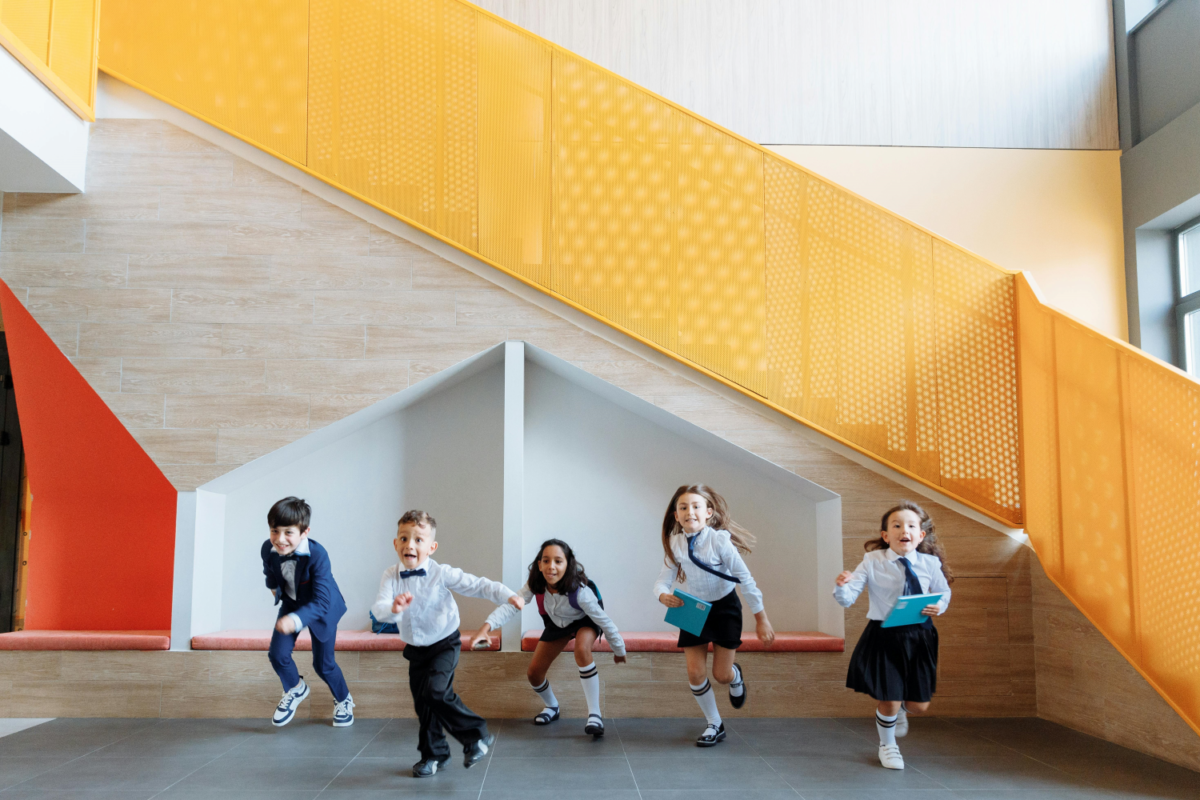Education is changing dramatically. “School choice” now lets families pick the best learning environment for their children. This isn’t just about money. It’s a major shift that demands new and innovative educational architecture. At Keiser Design Group, we believe innovative school design is vital. It creates spaces that not only fit but also boost success across many different learning paths.
School choice means public education funds can follow students to their chosen schools or services. This includes public schools, private schools, charter schools, or even home learning support centers. The movement challenges old ideas of what a “school” should look like. It pushes architects to envision facilities that are flexible, inspiring, and support various teaching methods. We know each family’s choice represents a unique educational journey. Our goal is to design environments that fully support that journey.

Adapting to Diverse Learning Models
For many years, the standard classroom dominated school design. However, the school choice movement shows a strong need for more adaptable educational architecture. We must move past just rows of desks. Instead, we embrace designs that support collaboration, personalized learning, project-based work, and even online or blended learning models. Our experience proves that well-designed educational spaces significantly improve student engagement and learning outcomes.
Think about a charter school focused on STEM, for example. Their ideal learning environment might feature flexible labs, dedicated maker spaces for hands-on projects, and collaborative zones with advanced technology. This is very different from a classical private school. That school might prioritize quiet study areas, traditional lecture halls, and dedicated arts studios. Each choice needs a unique architectural response. The evolution of school design clearly shows how dynamic education itself has become.
Furthermore, with school choice, we see more demand for spaces that can serve many purposes. A gymnasium, for instance, might need to become an auditorium for school assemblies. A cafeteria could double as a community meeting space. This multi-functional approach to educational architecture makes the most of available space. It also builds a stronger connection between the school and its community. This reflects the diverse needs of families making their school choice.
Cultivating Collaboration and Innovation Through Design
Families make a school choice for many reasons, but a common goal is to foster critical thinking, creativity, and teamwork. Educational architecture plays a key role in reaching these goals. Old, rigid classroom layouts can stop interaction. Modern designs, however, encourage active engagement.
We champion flexible learning environments. These break down physical barriers and encourage movement and interaction. This can include:
- Movable walls and furniture: Educators can rearrange spaces based on daily activities and student needs.
- Breakout zones and huddle rooms: These offer smaller, private spaces for group work, one-on-one help, or quiet thinking.
- Learning commons: These are central, multi-purpose areas. They combine libraries, tech hubs, and informal gathering spots. This builds a sense of community and shared learning. This kind of adaptable school design is essential for future-proofing facilities.
- Outdoor learning spaces: Connecting students with nature provides alternative settings for teaching and discovery.
These design choices are more than just looks. They are smart investments in a school’s ability to support different teaching methods and student learning styles. They directly meet the varied demands that come from the school choice movement. Our dedication to thoughtful educational architecture ensures every space is optimized for both learning and growth.

Enhancing Well-being and Inclusivity in Every Learning Environment
A crucial part of responsible educational architecture in the age of school choice is focusing on student well-being and inclusion. Learning environments should be safe, comfortable, and welcoming for all students, no matter their background or learning differences. This includes:
- Plenty of natural light: This improves mood, reduces eye strain, and boosts thinking skills. Strategic window and skylight placement is a key feature of good school design.
- Excellent acoustics: This minimizes distractions and ensures clear communication. It’s especially important for students with hearing challenges.
- Ergonomic furniture: This supports good posture and comfort during long periods of learning.
- Accessibility for everyone: Meeting and exceeding ADA standards ensures every student can access all facilities equally.
- Sensory-friendly spaces: Providing quiet zones or calming areas for students who might get overwhelmed.
When families choose a school, they often consider more than just academics. They look at the overall atmosphere and support systems. Our educational architecture prioritizes these elements. We create spaces that care for the whole child. They promote a positive and inclusive learning experience for every student. This complete approach to school design makes sure the physical environment supports the emotional and physical health of the school community.
Future-Proofing Educational Architecture for Evolving Needs
The idea of school choice suggests a future where educational needs are always changing. So, educational architecture must be flexible and adaptable by nature. At Keiser Design Group, we approach each project with a long-term view. We anticipate future technology and teaching changes.
This includes adding:
- Strong technology infrastructure: Ensuring reliable internet, enough power outlets, and flexible wiring for future tech.
- Modular design principles: Allowing easy rearrangement or expansion of spaces as needs change.
- Sustainable building practices: Creating energy-efficient and eco-friendly facilities. These lower operating costs and help create a healthy planet for future generations. This is a vital part of modern school design.
- Community integration: Designing schools that can also serve as community hubs. They offer resources and gathering spaces beyond regular school hours.
By using these principles, we help schools protect their investments in educational architecture. We ensure they remain relevant and effective learning environments for decades. This holds true no matter how the school choice landscape develops. Our forward-thinking approach to school design provides lasting value.
Your Partner in Shaping the Future of Education
The school choice movement offers both opportunities and challenges for schools. It stresses the vital need for spaces that are not just functional, but also inspiring, adaptable, and good for many learning styles and community needs. At Keiser Design Group, we are passionate about working with schools to navigate this changing landscape.
Our expertise in educational architecture allows us to create innovative and effective learning environments. These reflect each institution’s unique mission and vision. Ultimately, they support the diverse choices families are making for their children’s education. From overall planning to interior design, our complete approach ensures every detail helps create a lively and successful learning experience. We believe that exceptional school design can truly transform educational outcomes.
Discover how Keiser Design Group has helped schools reach their goals through thoughtful architectural design. Let us be your trusted partner in shaping the future of education, one inspiring learning environment at a time. Contact us today to learn how our expertise in educational architecture can help you create the perfect space for your students and community.


